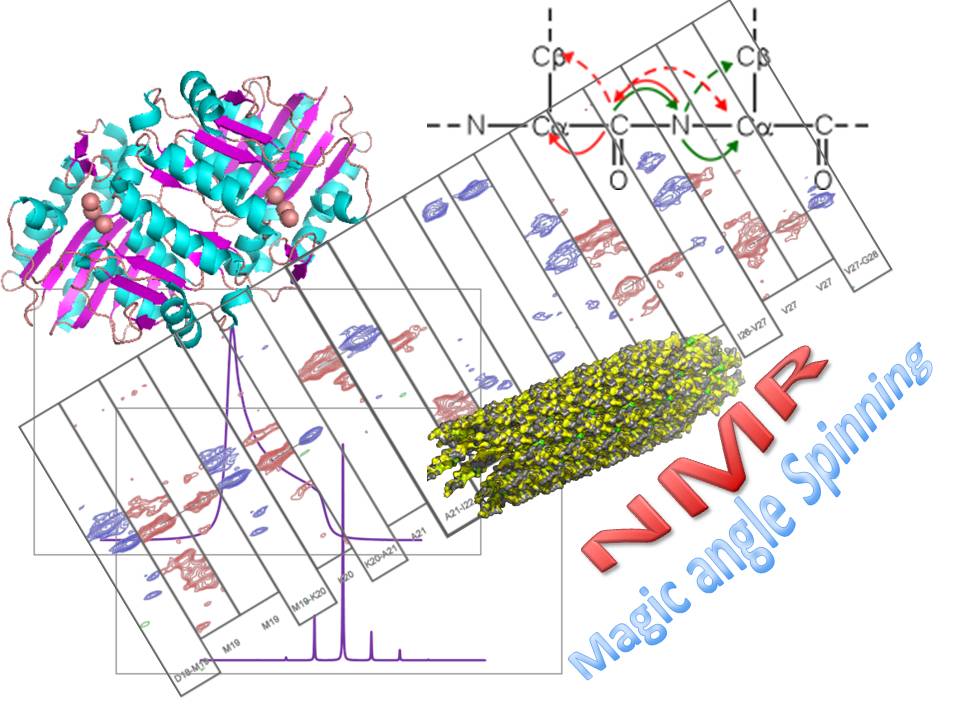|
Solid state NMR
group – |
|||||||||
|
|
Research interests: Bacteriophages: Filamentous bacteriophages comprise a family of bacteria-infecting viruses that share a similar virion structure and life cycle. The virion is composed of a circular ssDNA wrapped by thousands of similar copies of a major coat protein and several different minor coat proteins in both ends. In our group we prepare, purify and use magic-angle spinning (MAS) NMR techniques to characterize the structure of various phages in atomic-detailed resolution. Recently we managed to solve the quaternary capsid structure of the M13 virus (pdb: 2MJZ) using MAS NMR data as input to the ROSETTA fold-and-dock protocol. Lithium spectroscopy and bipolar disorder: Lithium salts have been known as mood stabilizing drugs for bipolar disorder patients for over 50 years. It was hypothesized that lithium exerts its therapeutic effect by binding to the enzyme myo-inositol monophosphatase (IMPase), thereby reducing inositol levels in the blood and lowering the hyperactive phosphatidyl-inositol cell signaling pathway. Other targets of lithium have also been proposed. Since lithium is mostly spectroscopically silent, we use magic-angle spinning NMR techniques to directly observe and characterize the lithium binding sites in its drug targets. In addition, we develop and apply new NMR methods for the characterization of lithium-containing materials. Protein structure by solid-state NMR: We have interest in understanding and developing means to obtain accurate structures of mid-sized proteins by solid-state NMR, and for that purpose we study microcrystalline proteins. Metal sites in enzymes: Metal ions in enzymes are mostly located in their active sites and play a crucial role in their function. However, in many cases low occupancies, dynamics and other obstacles hinder the detailed characterization of such sites. In our group we develop and apply techniques to characterize the structural environment of metal ions such as 11B, 51V, 7Li, 23Na and other similar nuclei having large anisotropic interaction in the magnetic field. |
||||||||
